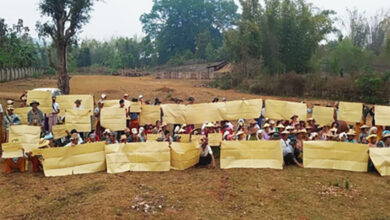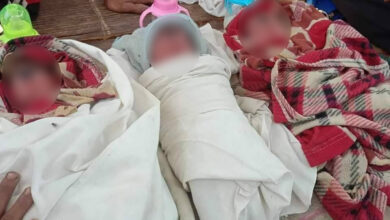Burmese monk injured in Indian bombing

On Sunday morning nine explosions ripped through the Bodh Gaya Buddhist temple in India where Gautama Buddha is said to have obtained enlightenment. In a recent development, Indian security forces today took four people into custody suspected of being involved in the explosions.
The bombs exploded in a thirty minute period, starting at 5.30 am as pilgrims made their way through the Bodh Gaya temple in the India state of Bihar on Sunday morning, July 7.
A Burmese monk, U Wilar Thatga, was one of two people injured in the explosions. Speaking to Karen News, a Karen monk living in India, U Pyannyar Dipa said.
“U Wilar Thatga has small injuries to his leg, abdomen and hands. The injuries are not very serious. He always went to the pagoda every morning. The bombs exploded at the time while [U Wilar Thatga] was there.”
The injured Burmese monk, U Wilar Thatga is from Myinchan, Sagaing Division, and is studying at Magadh University in India. U Wilar Thatga, because of his injuries from the bomb has been sent to Patna, the capital city of Bihar for medical treatment.
The India press said that one blast took place under the tree that Buddha received enlightenment and the rest of the blasts took place at the nearby Mahabodhi Tree and among surrounding Pagodas. Security specialist found four unexploded bombs at a Japanese pagoda.
U Pyannyar Dipa said.
“Two bombs exploded under the Bodhi Tree, one was in Yatanar Thataha where Buddha used to preach and one was in Ahnita Thataha. We do not know about the others bombs.”
The 7th century Bodh Gaya temple is renowned as an important Buddhist place of worship and is listed as a UNESCO world heritage site. Buddhist pilgrims from all over the world come to the temple each to visit the Bodhi tree under which Buddha is said to have reached enlightenment.
Karen News is led to understand that India’s security forces said that today they have arrested four suspects believe to be involved in the explosions.




